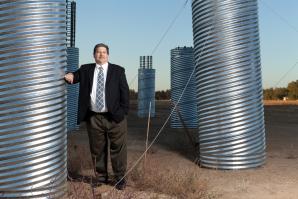When I was a girl, a visit to downtown Sacramento was thrilling. It was a busy, bustling place with Weinstock’s (“Sacramento’s Finest Department Store”) at 12th and K streets marking the high point of any shopping expedition.
I’d like to see a downtown Sacramento that can meet or exceed those childhood memories, one that is no longer scarred by vacant buildings, low-budget retailers and grimy streets. And that, I believe, is exactly what the proposed downtown Sacramento Kings arena can bring us.
Critics say city leaders — especially Mayor Kevin Johnson — are spending precious time, energy and money on a sports and entertainment facility, arguing that we should be focusing instead on such things as improving schools and city services. They argue that the city is footing too much of the bill, giving up too much for too little in return.
That’s just plain wrong-headed. The idea of a downtown arena — which will spark development and build the city’s tax base — has been around for years. Former mayor Heather Fargo first began the public push for a downtown sports complex in 2000 when she was a city councilwoman and mayoral candidate. Until now, city leaders simply couldn’t come up with a funding formula that could work for the city, Kings’ owners and developers.
Now they have a healthy public/private partnership between the city and the new team owners, who also plan to purchase and develop the surrounding Downtown Plaza. The city would spend $258 million, raised mostly by borrowing against future income from parking garages. It would own the complex and be guaranteed an annual payment of at least $1 million for 35 years — even if the 18,500-seat arena loses money — and more if certain profit benchmarks are met.
But, the city gets much, much more than an arena. Plans call for 475,000 square feet of office space, 300,000 square feet of retail space, 250 hotel rooms and 600 housing units. That housing alone is a prize the city has been seeking for decades, a way of bringing life, energy — and, yes, dollars — to an anemic downtown.
The development will bookend the east side of K Street Mall and the west face of the convention center. With that range of facilities, Sacramento becomes a contender for an entirely new level of events, offering a venue to attract first-rate entertainers, large convention groups and athletic competitions. New convention business alone could bring in hundreds of millions of dollars.
The city will see tremendous direct benefits in the form of property values and taxes, new retail and more sales taxes. These are the very revenue streams that can fund increased city services. Staples Center in Los Angeles and AT&T Park in San Francisco have been catalysts to revitalizing downtown areas. Why can’t a downtown entertainment complex complete with retail, lodging and housing provide an equally potent economic boost to stagnant downtown Sacramento?
I think it can, as does virtually every other business and government leader I know.
But, we must be careful not to assume the arena development is a done deal. There are still challenges ahead, including a possible petition drive to force the city to take the project to a public vote. Such a vote could delay the building process, already on a tight deadline set by the NBA, which is insisting that the building be ready for the Kings no later than 2017.
Now is the time for business leaders throughout the region to voice their strong support for downtown development. We can’t afford to lose this perfect storm of opportunities to transform downtown Sacramento and bring new employment, visitors and dollars to both the city and the surrounding region.
Recommended For You

Mayoral Musings
'Strong Mayor' will make city more nimble, NBA matchmaking and soccer in Sac
It’s been quite a year for Sacramento Mayor Kevin Johnson, topped in most people’s minds by his stunning, come-from-behind effort to block the Maloof family from selling and relocating the Sacramento Kings. We sat down with him recently to discuss basketball and several other topics important to the Capital Region.

Love Thy Neighbor
Sacramentans love infill development – until it actually happens
Infill development is promoted as an antidote to suburban sprawl and environmental degradation and is championed by city planners, environmentalists and policy makers of all persuasions. But as local developers Paul Petrovich and Phil Angelides have long known, infill leads to fights over allegations of increased traffic or environmental hazards.


